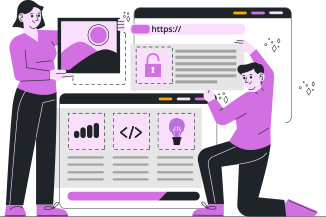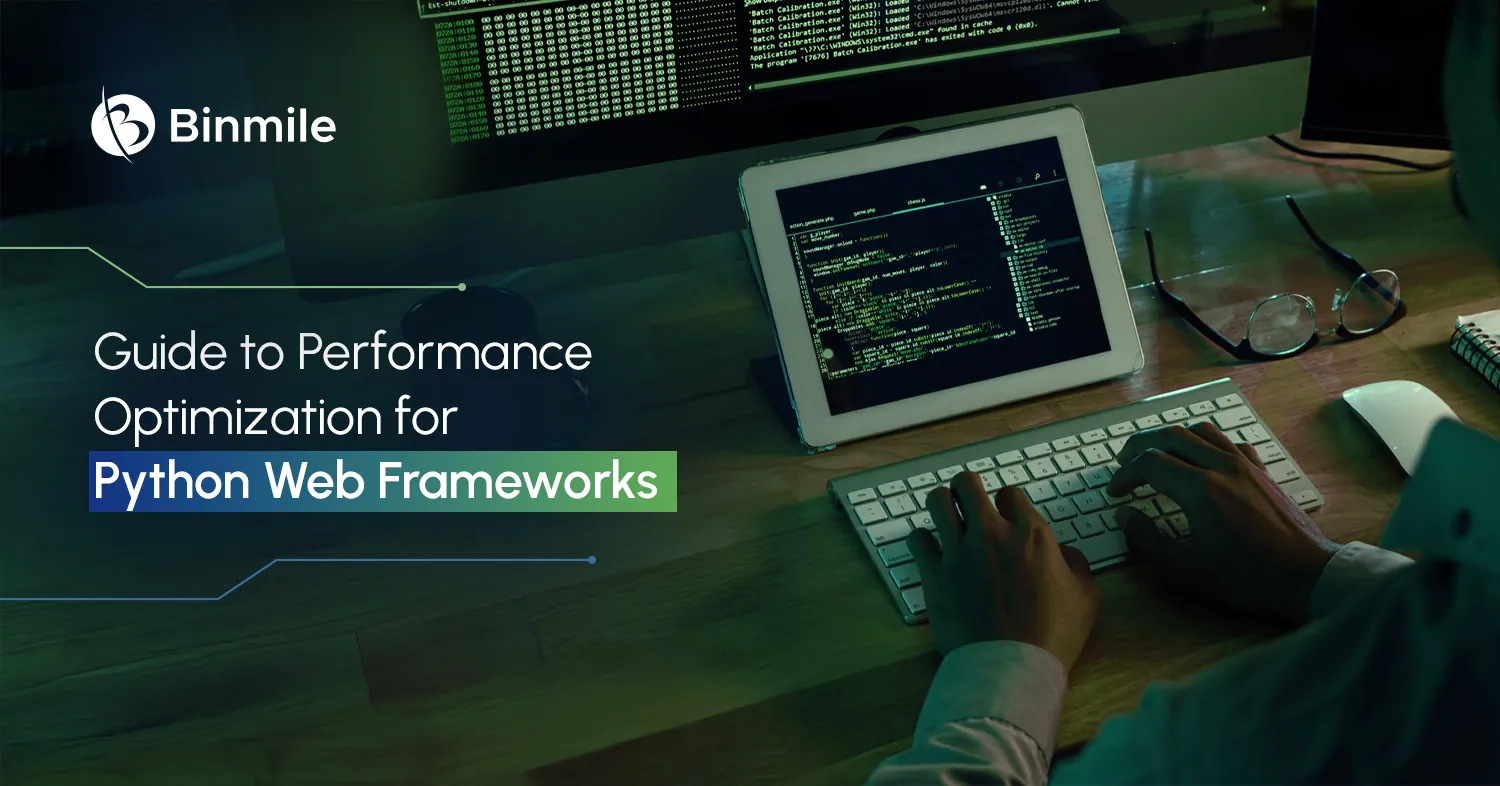With its features, such as being simple to learn, quick to execute, and a sizable community of programmers that use it, Python has become a popular programming language. It enjoys a whopping 48.7 million developers rules 28.11% of the market share and is ideal for various applications, from web development to data analysis. Despite its simplicity, power, and benefits, the programming language does come with certain security vulnerabilities. It’s imperative to secure your coding and adhere to Python security best practices to safeguard and protect published code risks or threats such as security exploits, the loss of cloud secrets, and personally identifiable information. Of course, properly written Python code can be secure, but code that is not written securely can leave your application vulnerable to security risks.
So, how do you secure Python code? Or what it entails? Even though Python has a large and active community of users and developers that can help you identify and fix potential security vulnerabilities. It’s wise to have a comprehensive understanding of and strict compliance with established best strategies. In this blog, we’ll explore Python security practices for web developers that should be employed when building secure applications. We’ll also discuss some of the common Python security risks and challenges that you may come across and how to avoid them. This is to help you significantly boost the security posture of your Python applications and mitigate potential risks.
Enhancing Your Code: 7 Python Security Best Practices You Can’t Ignore
It’s essential for developers not only to understand Python security best practices but also to consistently apply these Python secure coding best practices to fortify software against vulnerabilities and potential security risks. These best strategies ensure a guide for developers with a detailed framework for writing secure Python code, such as:

1. Keep Python and Its Tools Up-to-Date
Always work with Python’s latest stable version and keep the tools updated. This aids in protecting your code from various kinds of security threats that are well known. Older versions of Python and its libraries may have vulnerabilities that hackers may take advantage of. Therefore, it’s useful to establish a regular schedule update to check for and apply updates, let’s say, on a monthly basis.
2. Use Separate Environments for Different Projects
Establish a new environment for every new project that you take over because it helps to arrange your projects and avoid conflicts between different project needs. One or some more projects may be built using Python or the libraries of a specific version, while the others can be created by using another version of it or the language’s libraries. Combining these can lead to unpredictable behavior or even pose security risks, so to manage multiple environments efficiently, one can use the ‘virtualenvwrapper’.
3. Protect Sensitive Information
If your code is ever exposed to the world (for example, you accidentally push it into a public repository), then sensitive information can leak. Therefore, don’t hard-code your passwords and other API keys because they are sensitive information. Moreover, when it comes to handling this information, people should make sure it’s encrypted. You can use the cryptography module in Python to encrypt and decrypt data.
4. Be Careful with User Inputs
When users enter data into any application that you’ve created; always ensure that you validate and sanitize this data. This assists in avoiding attacks that might adversely affect your system, arising from unchecked input, such as SQL injection, cross-site scripting (XSS), etc. This is a general rule of thumb that means that even when the user data is from a registered user, it must not remain unchecked or unverified.
5. Use Safe Database Practices
While working with top databases of web apps, don’t neglect methods that secure against common security attacks, especially when you’re dealing with user-provided information. Depending and relying on the databases can lead you to lose the entire database or even get the wrong result out of the database. Thus, it’s recommended to maintain the database backup frequently and test your restore process.
6. Handle Errors Wisely
Coming across errors is inevitable while coding errors can help identify the logic bugs and syntax errors in your code. However, plan for things going wrong in your code in advance. Additionally, catch errors properly, but don’t show users technical details that could be used against your system. As detailed error messages can reveal information about your system’s structure or vulnerabilities to potential attackers. Thus, implement a centralized error handling and logging system in larger applications, such as using the ‘try’ and ‘except keywords’ in Python.
7. Secure Your Network Communications
When your application sends or receives data over the internet, use encryption to keep that data safe. Unencrypted data can be intercepted and read by malicious actors, potentially exposing sensitive information. Therefore, your developers must build applications that transmit data securely and protect against common threats such as eavesdropping and man-in-the-middle attacks. Consider using libraries like `requests` that handle many security best practices by default.
Secure your Python applications with expert development services tailored to your business needs. Get robust solutions built to last!

Top 5 Python Security Threats: Identifying Risks and Implementing Solutions
We’ve learned the Python security best practices to secure your code to help you preemptively catch errors and potential exploits by checking the data before it’s used in your application. When leveraging Python development services, it’s crucial to be aware of common Python security risks. So, here’s a rundown of some of the common Python security risks that you must know to timely secure Python code.

- Injections & Arbitrary Command Execution: These flaws allow an attacker to deliver malicious code through an application to a backend or internal system. Since user input is passed directly to standard Python functions, responsible for executing commands on the system, it can let an attacker execute commands on the target system.
- Overly Verbose Python Messages or Errors: While it’s natural to have a detailed debug output, it can help developers identify and troubleshoot problems. However, it’s equally important to keep the details to a minimum, as debugging information shown on production systems can lead to security issues and can compromise the system later.
- Outdated Libraries: Even though modules make writing Python applications straightforward while using third-party code, it’s best to check regularly for published vulnerabilities. They leave you exposed to using older versions that may be vulnerable to exploits. So, ensure proper input sanitation before accessing files.
- Broken Access Control: It’s the exploitation of access control management by attackers and bad actors since an attacker may change the URL parameters to anything malicious, giving them access to account information. Thus, ensure you conduct validation and verification of requests between the authorized user and the requested object resource.
- Exploited and Malicious Packages: Even though packaging makes it convenient and saves time for developers to code. However, most Python packages are published on code repositories that often go without any form of security review or scrutiny. So, anyone can easily build a package containing malicious code and publish it on the repository, or publish it with a similar name to a popular package causing security risks.
Secure your online presence with custom web development services that deliver high-performing, safe, and reliable digital products!

Closing Statement
Security risks and vulnerabilities are no longer in the backdrop but a constant concern and challenge for software development companies that need immediate and focused attention. After all, it’s not just about coding that works; it’s also about developing digital products that can stand against the threats of cybercriminals or security threats. Even though Python is a crowd-favorite for its simplicity, versatility, and a large collection of libraries, it’s still not exempt from security vulnerabilities. Thus, knowing some of the key Python security best practices can help you navigate through these security challenges.
Many development teams prioritize delivering and meeting deadlines over focusing on Python secure coding guidelines, which can open ways for vulnerability in the future. Thus, it’s always advisable to have Python security practices for web developers in mind when you are writing your Python projects. In this blog, we discussed the Python security practices for web developers. Hopefully, the insights can significantly improve the resilience of your applications against common vulnerabilities and threats.
Frequently Asked Questions
Python security is crucial because Python is widely used in building web applications, automation scripts, data pipelines, and even financial platforms—making it a prime target for cyber threats. Poorly secured Python code can lead to data breaches, unauthorized access, code injection attacks, and severe system vulnerabilities. By following security best practices, developers can safeguard sensitive information, ensure regulatory compliance, and build user trust. Additionally, as applications scale and integrate with external services or APIs, the risk of exposure increases—so prioritizing security from the development phase is essential for long-term success and reliability.
The best Python coding practices include writing readable and modular code, following the PEP 8 style guide, using meaningful variable names, and documenting code properly. Developers should also handle exceptions effectively and write unit tests to ensure code quality. At Binmile, our developers strictly adhere to these practices to deliver clean, maintainable, and efficient Python applications.
- Binmile follows secure coding guidelines and best practices throughout the development lifecycle.
- We conduct code reviews with a focus on identifying potential security vulnerabilities.
- We utilize static and dynamic application security testing (SAST/DAST) tools to automate vulnerability detection.
- Our team stays updated on the latest security threats and proactively implements preventative measures.
- We can provide penetration testing services to evaluate the security posture of the application.
- We emphasize the importance of secure deployment practices and ongoing security monitoring.
Python secure coding refers to writing code that defends against security vulnerabilities such as code injection, cross-site scripting (XSS), and data exposure. It involves validating user inputs, avoiding hardcoded credentials, using secure libraries, and applying proper authentication mechanisms. At Binmile, we embed secure coding principles into the development lifecycle to protect our clients’ applications from evolving cyber threats.









